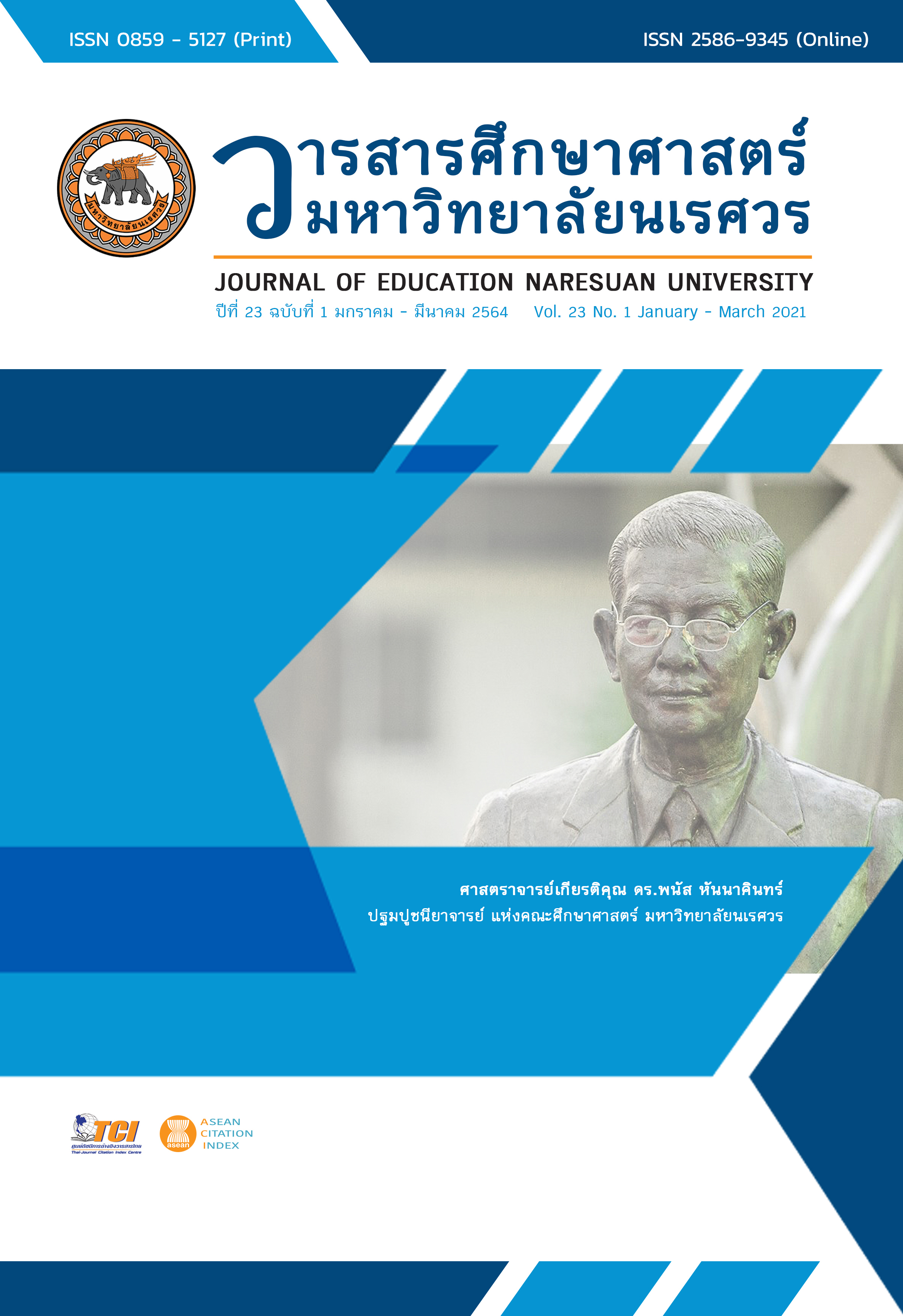กลวิธีการสอนอ่านเพื่อความเข้าใจสำหรับผู้เรียนสมาธิสั้น TEACHING STRATEGIES FOR READING COMPREHENSION: ADHD STUDENTS
Main Article Content
บทคัดย่อ
บทความนี้นำเสนอกลวิธีการสอนอ่านเพื่อความเข้าใจสำหรับผู้เรียนสมาธิสั้น ได้แก่ กลวิธีการสอนอ่านเพื่อความเข้าใจแบบแลกเปลี่ยนบทบาท และกลวิธีการสอนอ่านเพื่อความเข้าใจแบบ TWA คือ การคิดก่อนการอ่าน การคิดขณะอ่าน และการคิดหลังจากการอ่าน เพื่อให้ผู้สอนภาษาไทยได้มีแนวทางการสอนอ่านสำหรับผู้เรียนที่มีความแตกต่างกันในการเรียนรู้ และมีกระบวนการสอนที่สนับสนุนให้ผู้เรียนสามารถควบคุมการเรียนรู้ของตนเองด้วยวิธีการการเรียนรู้แบบร่วมมือ และการคิดวิเคราะห์ นอกจากนี้ กลวิธีการสอนที่นำเสนอสามารถสนับสนุนการพัฒนาทักษะการอ่านเพื่อความเข้าใจของผู้เรียนให้ต่อยอดไปสู่การเรียนรู้ในรายวิชาอื่น และการเรียนรู้ตลอดชีวิต
Article Details
เจ้าของบทความมิได้คัดลอก หรือละเมิดลิขสิทธิ์ของผู้ใด หากเกิดการละเมิดลิขสิทธิ์ ไม่ว่าวิธีใด หรือการฟ้องร้องไม่ว่ากรณีใด ๆ ที่อาจเกิดขึ้นได้ กองบรรณาธิการวารสารศึกษาศาสตร์ ไม่มีส่วนเกี่ยวข้องทั้งสิ้น ให้เป็นสิทธิ์ของเจ้าของบทความที่จะดำเนินการ
References
American Psychiatric Association. (2013). Diagnostic and statistical manual of mental disorders (5th ed.). Washington, DC: Author.
Esam, G. (2015). The effects of advance graphic organizers strategy intervention on improving reading comprehension of struggling readers in primary five. International Journal of Phycho-Educational Sciences, 8(1), 24-30.
Gillies, R. M. (2016). Cooperative learning: Review of research and practice. Australian Journal of Teacher Education, 41(3), 39-54.
Harris, K. R., & Graham, S. (1999). Programmatic intervention research: Illustrations from the evolution of self-regulated strategy development. Learning Disabilities Quarterly, 22, 251-262.
Hoyt, L. R. (2010). The effects of self-regulated strategy development (SRSD) on reading comprehension for secondary students with emotional and behavioral disabilities (Doctoral dissertation). Washington: University of Washington.
Khammani, T. (2013). Teaching science: Knowledge for learning management process. Bangkok: Chulalongkorn University Press. [in Thai]
Khuhapinant, C. (1999). Making books for children (4th ed.). Bangkok: Amon Karnphim. [in Thai]
Limsuwan, N., & Wisajun, P., (2017). Clinical presentations of attention-deficit/hyperactivity disorder in adults. Journal of the Psychiatric Association of Thailand, 62(2), 139-148. [in Thai]
Lundberg, I., & Reichenberg, M. (2013). Developing reading comprehension among students with mild intellectual disabilities: An intervention study. Scandinavian Journal of Educational Research, 57(1), 89-100.
Mason, L. H., Snyder, K. H., Sukhram, D. P., & Kedem, Y. (2006). TWA plus PLANS strategies for expository reading and writing: Effects for nine fourth grade students. Exceptional Children, 73(1), 69-89.
Munsettawit, S. (2000). Principles and methods of teaching Thai language reading. Bangkok: Thai Watana Panich Press. [in Thai]
Na Nakorn, P. (2001). The art of reading: principles of effective reading. Bangkok: Khaofang. [in Thai]
Palinscar, A., & Brown, A. (1984). Reciprocal teaching of comprehension-fostering and comprehension-monitoring activities. Cognition and Instruction, 2, 117-175.
Punyapas, S., Pornnoppadol, C., Boon-yasidhi, V., & Likhitkiatikhachorn, P., (2015). Reliability and validity of Weiss Functional Impairment Rating Scale (WFIRS)-Thai version in children and adolescents with attention deficit hyperactivity disorder. Journal of the Psychiatric Association of Thailand, 60(2), 111-126. [in Thai]
Purvis, K. L., & Tannock, R. (1997). Language abilities in children with ADHD, reading disabilities and normal controls. Journal of Abnormal Child Psychology, 25(2), 133-144.
Rogevich, M. E., & Perin, D. (2008). Effects on science summarization of a reading comprehension intervention for adolescents with behavior and attention disorders. Exceptional Children, 74(2), 135-154.
Rosenshine, B., & Meister, C. (1994). Reciprocal teaching: A review of the research. Review of Educational Research, 64, 479-530.
Rungwaraphong, P. (2012). Towards learner autonomy: An investigation of Thai lecturers’ beliefs confidence and practices. FLLT Journal, 1(1), 35-48.
Rungwaraphong, P. (2014). Promoting learner autonomy through dialogic learning. Journal of Education Prince of Songkla University, 25(1), 9-16. [in Thai]
Stern, P., & Shalev, L. (2013). The role of sustained attention and text’s conditions in reading comprehension among adolescents with ADHD and without it. Research in Developmental Disabilities, 34, 431-439.
Visanuyothin, T., Pavasuthipaisit, C., Wachiradilok, P., Arunruang P., & Buranasuksakul, T. (2013). The prevalence of attention deficit/hyperactivity disorder in Thailand. Journal of Mental Health of Thailand, 62(2), 66-75. [in Thai]

